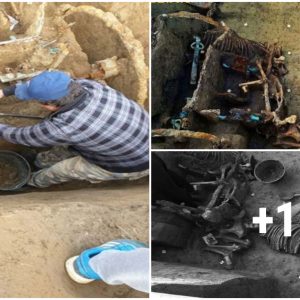Look what the cat dragged in …

Image © Dietmar Willuhn
Photographer Dietmar Willuhn captured these striking (and slightly unsettling) images of a leopard with an unusual catch in Botswana’s Selinda Game Reserve back in November 2012.
The unfortunate victim here is a caracal (Caracal caracal), a small, notoriously elusive cat that’s found throughout Africa, as well as in central and south-west Asia. Although a formidable predator capable of tackling prey two or three times its size, a caracal is no match for an adult leopard, and the odds in this fight were firmly stacked in the leopard’s favour.
Willuhn was on a guided safari drive when the tour group came across a leopard and her cub. “We were able to follow the leopard for some time,” he told Africa Geographic. “The peaceful situation suddenly changed when the leopard left the small cub hidden in the bushes to continue on her own. The adult leopard went into hunting mode and potential prey was not far away as some impalas were grazing close by.”

Image © Dietmar Willuhn
Leopards are opportunistic hunters and will prey on anything that’s edible (even rhinos or bloated zebra carcasses), so while Willuhn and the rest of the tour group were anticipating an impala kill, the leopard had honed in on something else.
Shortly after it disappeared into a patch of long grass, the roars of a feline battle broke the silence. By the time the tour group had gained a vantage point on the action, the fight was all but over – the leopard had dispatched of the caracal with a swift bite to the neck.
Although it may surprise some to see a leopard stalking and killing a fellow feline, this kind of cat-on-cat violence is not uncommon. Apex predators will sometimes take on rival species to snub out any competition for food, and rarely will a wild carnivore resist an easy meal (even if it means taking out a member of the feline family).
In this case, the leopard probably came across the caracal by chance and chose to make a meal of the opportunity. “Leopards are predators that do not specialise on any one prey,” explains Laurel E.K. Serieys, carnivore biologist and coordinator for the Urban Caracal Project in Cape Town, South Africa. “As generalist predators, they [leopards] are also opportunistic predators – when they see an opportunity for a meal and they are hungry, they may pursue it.”
Although the caracals Serieys studies on the Cape Peninsula do not have to contend with leopards, she has found evidence that they also dabble in feline cuisine, sometimes preying on domestic cats.
It’s cat-eat-cat world out there …

Image © Dietmar Willuhn

Image © Dietmar Willuhn

Image © Dietmar Willuhn

Image © Dietmar Willuhn

Image © Dietmar Willuhn

Image © Dietmar Willuhn

Image © Dietmar Willuhn



